The enduring wait for any kind of information about Hollow Knight: Silksong seems to have sent the indie game scene into a frenzy of Metroidvania releases. Bo: Path of the Teal Lotus is one of the titles seemingly trying to capture Team Cherry’s magic by taking the same Metroid-meets-Fromsoft formula and transposing it to ancient Japan. However, while it may be a worthwhile game to pick up while you wait, it does have some issues.
You play as Bo, a spirit born from a lotus known as a tentaihana. Equipped with a staff, they head out into the world to build up their powers in order to take on a monstrous giant roaming the land leaving destruction in its wake. Along the way, Bo encounters a wide cast of characters drawn from Japanese mythology with plenty of other problems to deal with.
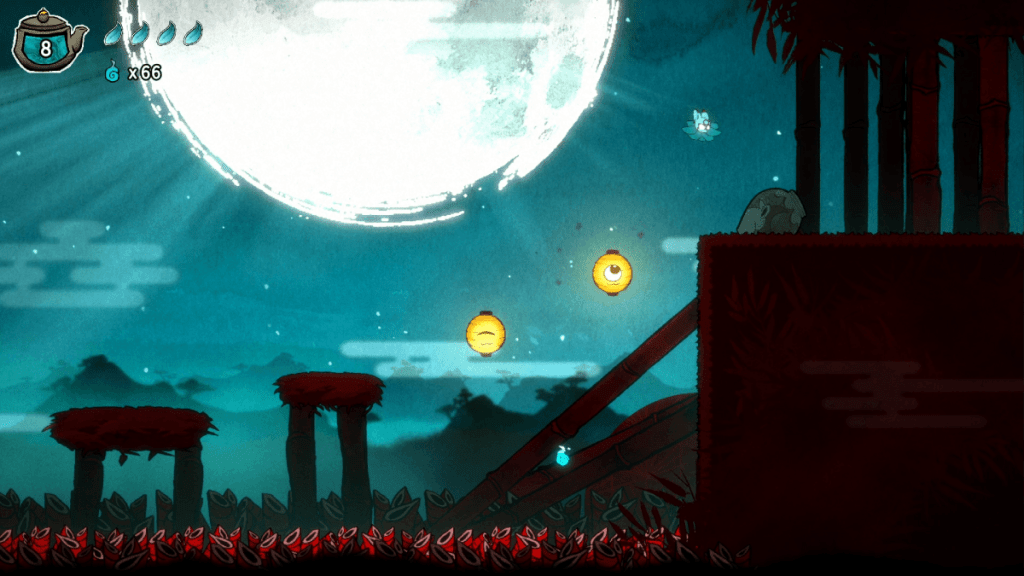
If you’ve played any recent indie Metroidvania game, you already have an idea how Bo: Path of the Teal Lotus works. It’s a side-scroller with a semi-open map, where some routes are closed off to you until you find the correct ability to progress. For instance, early on you can unlock a dash move, while later abilities include a mochi hammer, a glide, and the ability to roll up vertical walls. Obtaining these abilities require completing challenges and defeating bosses. It’s standard stuff all round.
More specifically, there’s a noticeable Hollow Knight inspiration here in Bo: Path of the Teal Lotus. Much like that Metroidvania game, there’s an emphasis on tough combat, with Soulslike elements such as shrines in place of benches or bonfires. It even reuses the Soul mechanic, replacing it with a tea kettle that’s used for healing and spell-like abilities powered by Darumas.
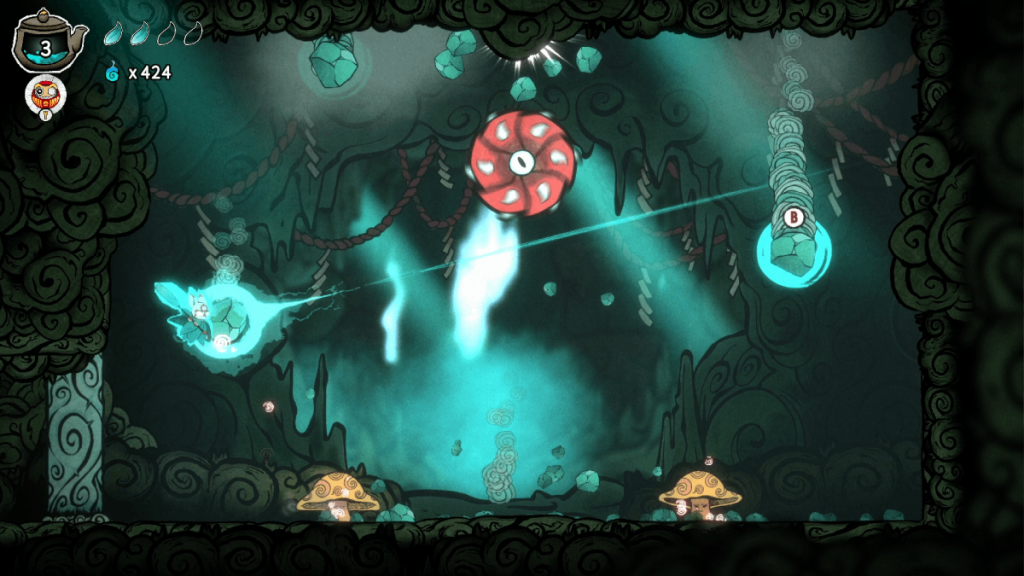
However, a different Metroidvania also shows its obvious mark on the game developers here. Bo: Path of the Teal Lotus uses a lot of design choices inspired by Ori and the Blind Forest. The game’s platforming challenges involve long sequences of keeping Bo airborne through deadly areas while your exploration is occasionally broken up by tricky chase sequences. The game’s main story, focused on a spirit born from the forest, is undeniably similar too.
The aerial moves make up a big part of Bo’s moveset. Early on, you unlock the ability to gain a jump from attacking an enemy (or object) while in the air. This can be repeated infinitely, so you can stay in the air as long as you keep hitting something. Many platforming sections are built with lanterns lining your path which you can pogo off, and the dash and grappling hook abilities add speedy linear movement to the mix.
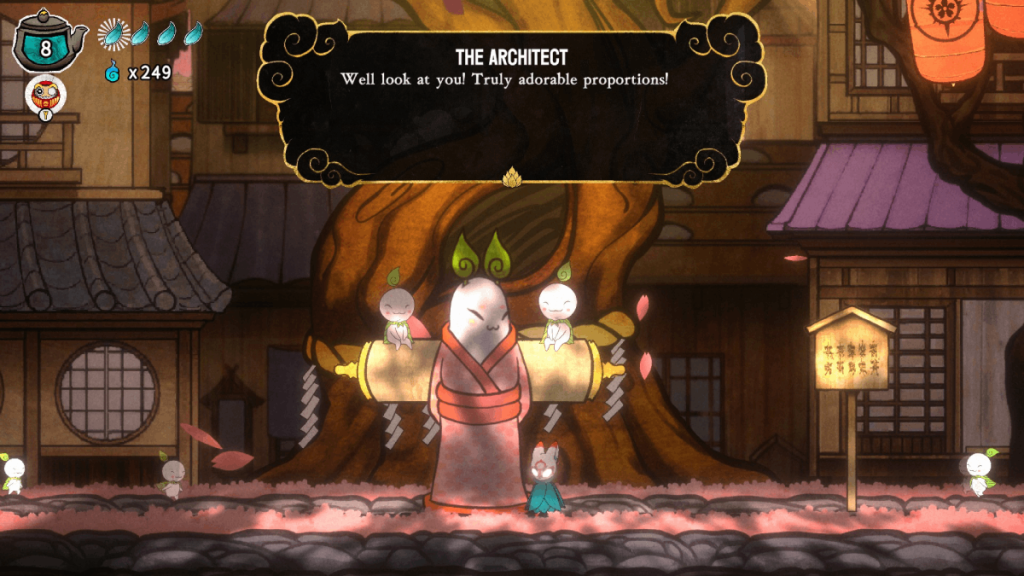
However, this emphasis on these kinds of challenges runs into a roadblock fast. After all, these platforming challenges were inspired by Ori, a game built around fluidity and speed, while Bo’s actual movement was inspired by Hollow Knight, a game about slow, heavy precision. What this leads to is frustration, as the movement mechanics often feel too clunky and imprecise to consistently achieve what the game wanted me to do.
Alarmingly often, I’d find myself swinging my staff at an aerial target, visually seeming to hit but mechanically missing and falling to my death. Occasionally a pogo hit simply wouldn’t register as such, turning a mighty launch into a meek little hop. A move designed to launch yourself off projectiles requires multiple inputs, compared to the one required for Ori’s similar Bash move. And that’s without addressing how slow the required projectiles to launch off are, meaning you’re often left with nothing to launch off, sending you into spikes. These are all annoyances that remove any sense of flow from these challenges, making them frustrating, and not in a fun way.
This was especially noticeable in a major chase sequence that ends the first act of the game. Too many attempts were ended because an aerial hit failed to register, or because a dash fell inexplicably short. It’s also a long sequence that loves to spring unexpected platform disappearances on you, and every failure sends you all the way back to the start. The satisfaction of clearing a tough section of the run went out the window when the next lantern I encountered decided to float off into the distance without warning, requiring me to do everything again.
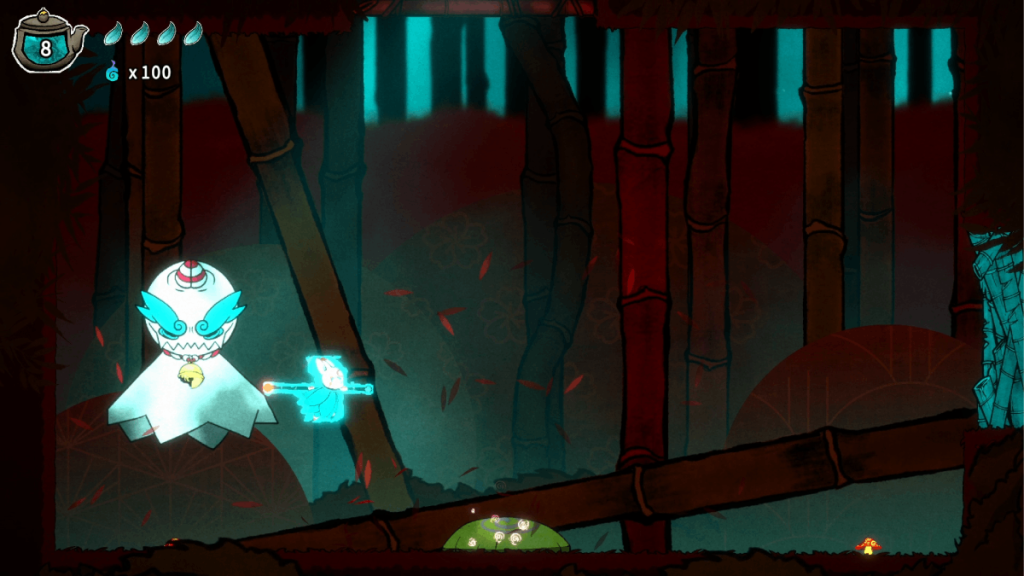
This Metroidvania game does fare better when it comes to combat. In fact, while the boss fights were all challenging, I had a much better time, with the movement mechanics enhancing the combat abilities in interesting ways. Possibly helps that bouncing off a boss’s massive head was an easier ask than a tiny lantern, of course, as the bigger hitbox meant lower chance of an arbitrary miss.
One Bo: Path of the Teal Lotus fight that shows this off requires you to take on a sumo beetle. While it is possible to defeat it normally by dodging and weaving on the ground, some portions of the fight see him flying into the air. Good use of the movement mechanics can carry you up with him, dealing out more damage. It felt like a reward for grasping the mechanics in a way that I didn’t get out of the platforming. The stark contrast is proof that the focus should have been placed on combat throughout the game.
Indeed, when a boss fight does require the movement mechanics as a central element, rather than something optional but rewarding, they end up being weaker for it. One example was a boss that flies up to the top of the map for its final phase, requiring a sequence of grapples through a minefield of homing shots just to get near it. I would often struggle with this one simply because the game arbitrarily wouldn’t let me target the grappling hooks I wanted, resulting in me taking odd detours or slamming directly into a projectile. Usually both.
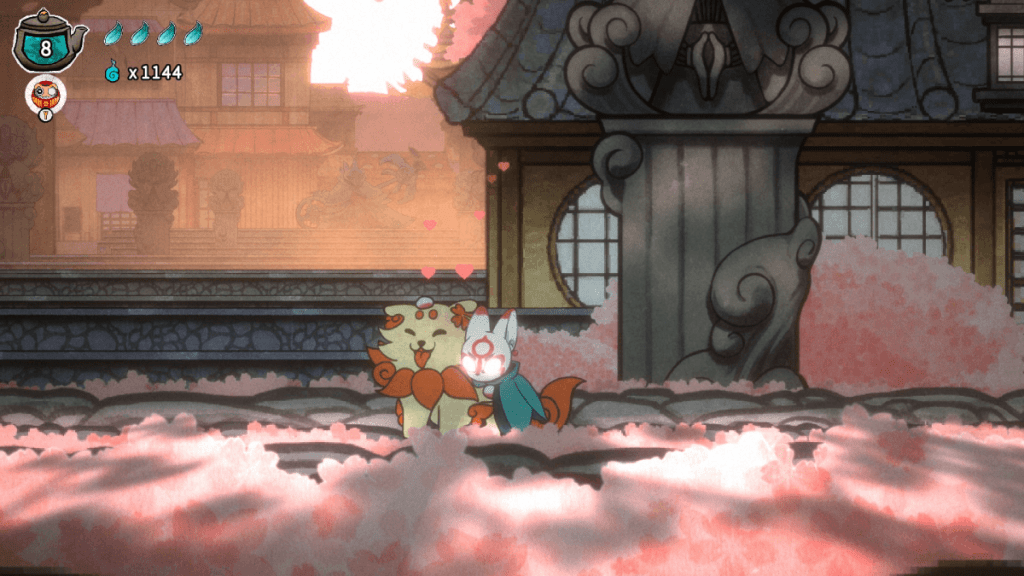
It’s a real shame that the mechanics can sometimes be such a chore, as Bo: Path of the Teal Lotus is a beautiful Metroidvania game. The hand-drawn visuals draw a lot of inspiration from ukiyo-e and it’s a joy to look at. There’s a vibrance to this world, with even caves and mountainous regions appearing colorful. The way statues and shrines have been woven into the fabric of the world adds visual variety and makes each area feel distinct. Using a shrine also starts up an adorable animation where Bo settles in for some tea, which also won me over in a big way.
This extends to the writing too. The story is heavily reminiscent of Okami, as you guide your canine-adjacent protagonist through a variety of myths and legends that culminate in taking on a great evil. NPC dialog is a treat, from your reluctant guide Asahi’s grumpy way of helping to the assorted residents of Sakura City. It’s used to great effect, as you grow to love these characters, making you care deeply when your ultimate foe stomps their way through their home. I rarely get invested in the stories of games in this genre, so this was refreshing.
I wish I could recommend Bo: Path of the Teal Lotus more. Its presentation is immaculate and when the game is focused on combat, it’s incredibly satisfying. But the inconsistencies that drag down the platforming segments sour the whole experience.
Bo: Path of the Teal Lotus will release for PC on July 17, 2024.
Bo: Path of the Teal Lotus
The presentation in Bo: Path of the Teal Lotus is immaculate and combat is satisfying, but inconsistent platforming sours the experience.
Pros
- The Daruma spells add a lot to combat, with highlights including temporary invulnerability, a ring of spiky friends and an angry Pac-Man projectile.
- The tentaihana mythology is fleshed out surprisingly well, to the point where I had to check it wasn't from actual mythology. Well done.
- Yes, as you see in the screenshots, you can pet the dog. Rejoice!
A copy of this game was provided by the publisher for review. Reviewed on PC.